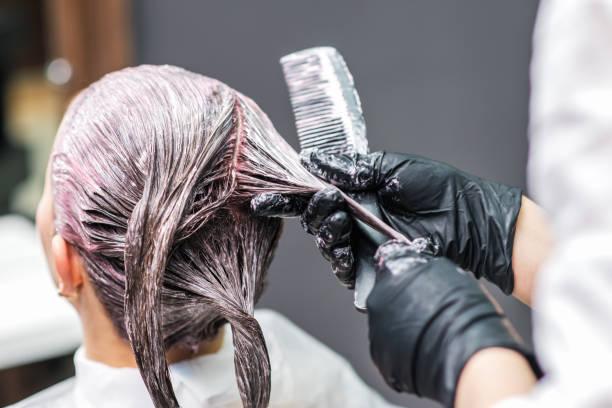
Beauty salons and nail salons create some of the most chemically concentrated indoor environments in commercial spaces. While these businesses help people look and feel their best, the cocktail of volatile organic compounds (VOCs), particulate matter, and chemical vapors present serious health risks that many salon owners and workers don’t fully understand.
The Invisible Threat: Why Salon Air Quality Matters
Beauty salons expose workers and clients to chemical concentrations that can be 10-50 times higher than typical indoor environments. Unlike brief exposure in other settings, salon workers face these chemicals for 8-12 hours daily, while clients experience concentrated exposure during services.
The confined nature of salon spaces, combined with limited ventilation and constant chemical use, creates a perfect storm for air quality problems. What makes this particularly concerning is that many symptoms develop gradually, making it difficult to connect health issues with workplace exposure.
The Economic Impact of Poor Salon Air Quality
- Worker sick days and turnover costs salons an average of $15,000-25,000 annually
- Client complaints about chemical odors can damage reputation and reduce repeat business
- Regulatory violations can result in fines and temporary closures
- Workers’ compensation claims from chemical exposure are increasingly common
Concerned about your salon’s air quality? Our Commercial Air Quality Assessment for Beauty Businesses identifies hidden dangers and provides actionable solutions.
Hair Salon Chemical Hazards: More Than Meets the Eye
Hair Color and Bleach Chemicals
Ammonia
- Present in most permanent hair dyes and lighteners
- Causes immediate respiratory irritation and long-term lung damage
- Can trigger asthma attacks and worsen existing respiratory conditions
- Combines with other chemicals to form even more toxic compounds
Hydrogen Peroxide
- Used in hair coloring and bleaching products
- Causes eye, skin, and respiratory irritation
- Can lead to chemical burns with prolonged exposure
- Creates harmful vapors that accumulate in poorly ventilated spaces
Paraphenylenediamine (PPD)
- Common allergen in permanent hair dyes
- Can cause severe allergic reactions and contact dermatitis
- Linked to bladder cancer in some studies
- Becomes more dangerous when mixed with other chemicals
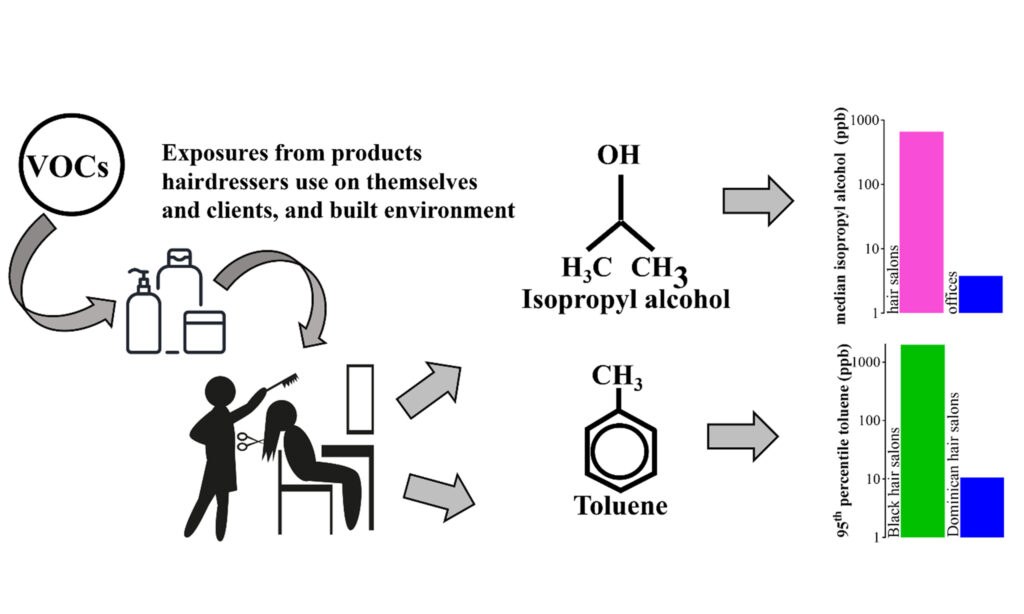
Hair Treatment Chemical Risks
Formaldehyde in Keratin Treatments
- Brazilian blowouts and similar treatments often contain formaldehyde
- Classified as a human carcinogen by the EPA
- Causes immediate eye and throat irritation
- Long-term exposure linked to nasal cancer and leukemia
Methylene Glycol
- Often used instead of formaldehyde but releases formaldehyde when heated
- Creates the same health risks as direct formaldehyde exposure
- Not always clearly labeled on product ingredients
- Becomes more dangerous when combined with heat from blow dryers
Aerosol Product Dangers
Hairspray VOCs
- Contain multiple volatile organic compounds including alcohols and hydrocarbons
- Create fine particulate matter that penetrates deep into lungs
- Can cause respiratory irritation and neurological symptoms
- Accumulate in salon air throughout the day
Dry Shampoos and Texturizers
- Contain talc and other mineral particles that become airborne
- Can cause respiratory issues similar to dust exposure
- Some products contain benzene, a known carcinogen
- Create clouds of particles that settle on surfaces and are re-suspended
Hair salon owners: Learn how Professional Air Purification Systems can eliminate these chemical threats while maintaining a comfortable environment for staff and clients.
Nail Salon Air Quality: A Toxic Cocktail
Acrylic and Gel Nail Chemicals
Methyl Methacrylate (MMA)
- Used in some acrylic nail systems
- Causes severe respiratory irritation and skin sensitization
- Banned in many states but still found in some products
- Can cause permanent lung damage with chronic exposure
Ethyl Methacrylate (EMA)
- Safer alternative to MMA but still poses health risks
- Causes eye and respiratory irritation
- Can lead to occupational asthma in sensitive individuals
- Creates strong odors that indicate harmful vapor concentrations
Toluene
- Common solvent in nail polishes and removers
- Affects the central nervous system causing dizziness and headaches
- Can cause reproductive harm and developmental problems
- Accumulates in poorly ventilated spaces
Nail Polish and Remover Hazards
Acetone Exposure
- Primary ingredient in most nail polish removers
- Causes skin drying, eye irritation, and respiratory problems
- Can trigger headaches and dizziness with prolonged exposure
- Creates vapors that are heavier than air and settle in low areas
Dibutyl Phthalate (DBP)
- Used to prevent nail polish chipping
- Endocrine disruptor linked to reproductive issues
- Can cause developmental problems during pregnancy
- Persists in indoor air for extended periods
Formaldehyde in Nail Hardeners
- Used to strengthen and harden nails
- Same carcinogenic risks as other formaldehyde sources
- Can cause severe allergic reactions
- Often not clearly identified on product labels
UV Lamp Radiation Risks
UVA Exposure from Gel Curing Lamps
- Can cause skin damage similar to tanning beds
- Increases risk of skin cancer with repeated exposure
- Causes premature aging and skin discoloration
- Risk compounds when combined with chemical sensitization
Nail salon workers deserve protection from these daily chemical exposures. Discover Nail Salon Air Quality Solutions designed specifically for beauty industry needs.
The Cumulative Health Impact on Salon Workers
Occupational Asthma and Respiratory Disease
Salon workers face a 40% higher risk of developing occupational asthma compared to the general population. This includes:
Chemical-Induced Asthma
- Triggered by specific salon chemicals like ammonia and formaldehyde
- Often develops gradually over months or years of exposure
- May not improve even after leaving the salon environment
- Can become severe enough to end careers
Hypersensitivity Pneumonitis
- Inflammatory lung disease from inhaling chemical particles
- Causes scarring and permanent lung damage
- Often misdiagnosed as other respiratory conditions
- Can be fatal if exposure continues
Reproductive and Developmental Risks
Pregnancy Concerns
- Higher rates of miscarriage among salon workers
- Increased risk of birth defects and low birth weight
- Some chemicals cross the placental barrier
- Risk continues through breastfeeding
Fertility Issues
- Both male and female salon workers report higher rates of infertility
- Chemical exposure can affect hormone production
- Some solvents damage reproductive organs
- Effects may not be reversible after exposure ends
Neurological and Cognitive Effects
Chronic Chemical Exposure Symptoms
- Memory problems and difficulty concentrating
- Mood changes and irritability
- Headaches and dizziness
- Sleep disturbances and chronic fatigue
Long-term Neurological Damage
- Some salon chemicals can cause permanent brain damage
- Symptoms may not appear for years after initial exposure
- Can affect coordination and cognitive function
- May increase risk of neurodegenerative diseases
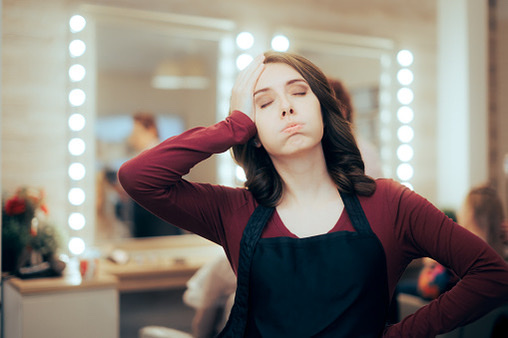
Client Health Risks: More Than Just Allergic Reactions
Acute Exposure Symptoms
Immediate Chemical Reactions
- Eye, nose, and throat irritation
- Headaches and dizziness during services
- Skin reactions and chemical burns
- Breathing difficulties and chest tightness
Allergic Sensitization
- Development of contact dermatitis
- Respiratory allergies that worsen over time
- Cross-reactivity with other chemicals
- Potential for severe allergic reactions
Long-term Client Health Concerns
Cancer Risk
- Regular exposure to formaldehyde and other carcinogens
- Risk increases with frequency of salon visits
- Particularly concerning for clients receiving frequent color treatments
- Children and pregnant women face higher risks
Chemical Sensitization
- Gradual development of multiple chemical sensitivities
- Can affect daily life beyond salon visits
- May require lifestyle changes and product avoidance
- Often becomes progressively worse over time
Protect your clients’ health and your business reputation with a Client Safety Air Quality Assessment for beauty professionals.
Regulatory Requirements and Industry Standards
OSHA Regulations for Beauty Salons
Permissible Exposure Limits (PELs)
- Specific limits for common salon chemicals like formaldehyde and toluene
- Employers must ensure exposures stay below these limits
- Regular monitoring may be required for certain chemicals
- Violations can result in significant fines and closures
Ventilation Requirements
- Minimum air exchange rates for chemical-using businesses
- Proper exhaust systems must remove contaminants at the source
- Make-up air requirements to replace exhausted air
- Regular maintenance and testing of ventilation systems
State and Local Health Codes
Licensing and Safety Requirements
- Many states require specific ventilation systems for nail salons
- Some jurisdictions ban certain chemicals like MMA
- Regular health inspections may include air quality assessments
- Worker safety training requirements are becoming more common
Professional Liability
- Salon owners can be held liable for worker and client health problems
- Insurance may not cover claims related to poor air quality
- Documentation of safety measures is increasingly important
- Professional certifications in air quality management provide protection
The Science Behind Effective Salon Air Purification
Understanding Commercial-Grade Filtration
HEPA Filtration for Particle Removal
- True HEPA filters capture 99.99% of particles 0.003 microns and larger
- Essential for removing aerosol particles from hairsprays and powders
- Must be properly sized for salon square footage
- Requires regular maintenance to maintain effectiveness
Activated Carbon for Chemical Absorption
- Specialized carbon filters absorb VOCs and chemical vapors
- Different carbon types target specific chemicals
- Must be replaced regularly based on chemical load
- Some systems use multiple carbon stages for maximum effectiveness
UV-C Light for Pathogen Control
- Ultraviolet light destroys bacteria, viruses, and mold spores
- Particularly important in humid salon environments
- Must be properly shielded to protect workers and clients
- Effectiveness depends on contact time and light intensity
Advanced Air Purification Technologies
Photocatalytic Oxidation (PCO)
- Breaks down VOCs and chemicals at the molecular level
- More effective than carbon alone for many salon chemicals
- Converts harmful compounds into harmless water vapor and CO2
- Requires specialized UV lights and catalyst materials
Ion Generation and Plasma Technology
- Produces ions that neutralize airborne contaminants
- Can break down odor molecules and chemical vapors
- Some systems combine multiple technologies for maximum effectiveness
- Must be properly balanced to avoid ozone production
Ready to upgrade your salon’s air quality? Our Advanced Air Purification Technology Guide explains which systems work best for different salon types.
Professional Air Purification: The Ultimate Defense Strategy
Comprehensive Salon Air Management Systems
Multi-Stage Filtration Approach Modern professional air purifiers designed for commercial beauty applications typically incorporate:
- Pre-filtration to capture large particles and extend primary filter life
- True HEPA filtration for microscopic particles and aerosols
- Multi-layer activated carbon specifically formulated for beauty industry chemicals
- UV-C sterilization to eliminate biological contaminants
- Advanced oxidation to break down stubborn VOCs and odors
Real-time Air Quality Monitoring Professional systems include:
- Continuous monitoring of particle levels and chemical concentrations
- Automatic adjustment of purification intensity based on air quality
- Digital displays showing current air quality status
- Alert systems when filter replacement is needed
- Data logging for regulatory compliance
Sizing and Placement Strategies
Coverage Area Calculations
- Professional units typically handle 800-1,000 square feet
- Multiple units may be needed for larger salons
- Air exchange rates should be 4-6 times per hour minimum
- Chemical load and number of workstations affect sizing requirements
Strategic Placement for Maximum Effectiveness
- Units should be positioned near chemical use areas
- Air intake should be at breathing level (4-6 feet high)
- Avoid placing units where they create drafts on clients
- Consider workflow patterns to avoid interference
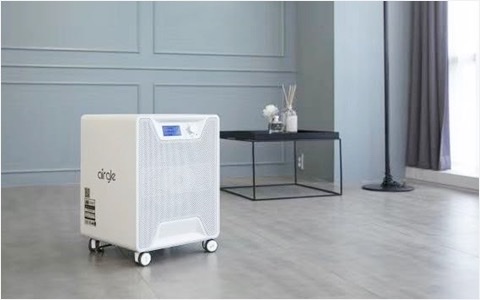
Return on Investment for Professional Air Purification
Health Cost Savings
- Reduced worker sick days and turnover
- Lower workers’ compensation claims
- Decreased client complaints and potential liability
- Improved worker productivity and job satisfaction
Business Benefits
- Enhanced client comfort and satisfaction
- Ability to market as a health-conscious business
- Compliance with increasing regulations
- Protection of business reputation
Operational Advantages
- Reduced odors that might disturb neighboring businesses
- Less frequent deep cleaning needed
- Extended life of salon equipment and furnishings
- Improved air quality for extended operating hours
Implementation: Building Your Salon’s Air Quality Defense
Immediate Action Steps
Assessment and Planning
- Conduct a comprehensive air quality audit to identify specific contaminant sources
- Review current ventilation systems and identify deficiencies
- Inventory all chemical products and research safer alternatives where possible
- Evaluate workspace layout for optimal air purification placement
Quick Wins for Immediate Improvement
- Install exhaust fans directly over high-chemical-use areas
- Implement better product storage practices to reduce ambient exposure
- Train staff on proper ventilation practices and chemical handling
- Establish no-chemical zones for breaks and meals
Professional System Selection Criteria
Key Features for Beauty Industry Applications
Chemical-Specific Filtration
- Carbon filters formulated for beauty industry chemicals
- Multi-stage chemical absorption for complex VOC mixtures
- High-capacity filters that handle heavy chemical loads
- Easy filter replacement for busy salon schedules
Quiet Operation
- Low noise levels that don’t interfere with client conversations
- Variable speed settings for different operating conditions
- Sound dampening features for client comfort
- Night mode settings for extended operation
Professional Construction
- Commercial-grade components designed for continuous operation
- Durable housing that withstands salon environment
- Professional appearance that complements salon décor
- Easy maintenance access for busy salon schedules
Smart Monitoring and Controls
- Real-time air quality monitoring and display
- Automatic operation based on chemical detection
- Remote monitoring capabilities for multi-location businesses
- Integration with existing HVAC systems where appropriate
Long-term Maintenance and Optimization
Filter Replacement Scheduling
- Pre-filters: Every 3-4 weeks in high-use salons
- HEPA filters: Every 6-12 months depending on usage
- Carbon filters: Every 3-6 months based on chemical load
- UV lamps: Annual replacement for optimal effectiveness
Performance Monitoring
- Regular air quality testing to verify system effectiveness
- Documentation for regulatory compliance and insurance
- Adjustment of settings based on seasonal changes and usage patterns
- Upgrade planning as technology advances
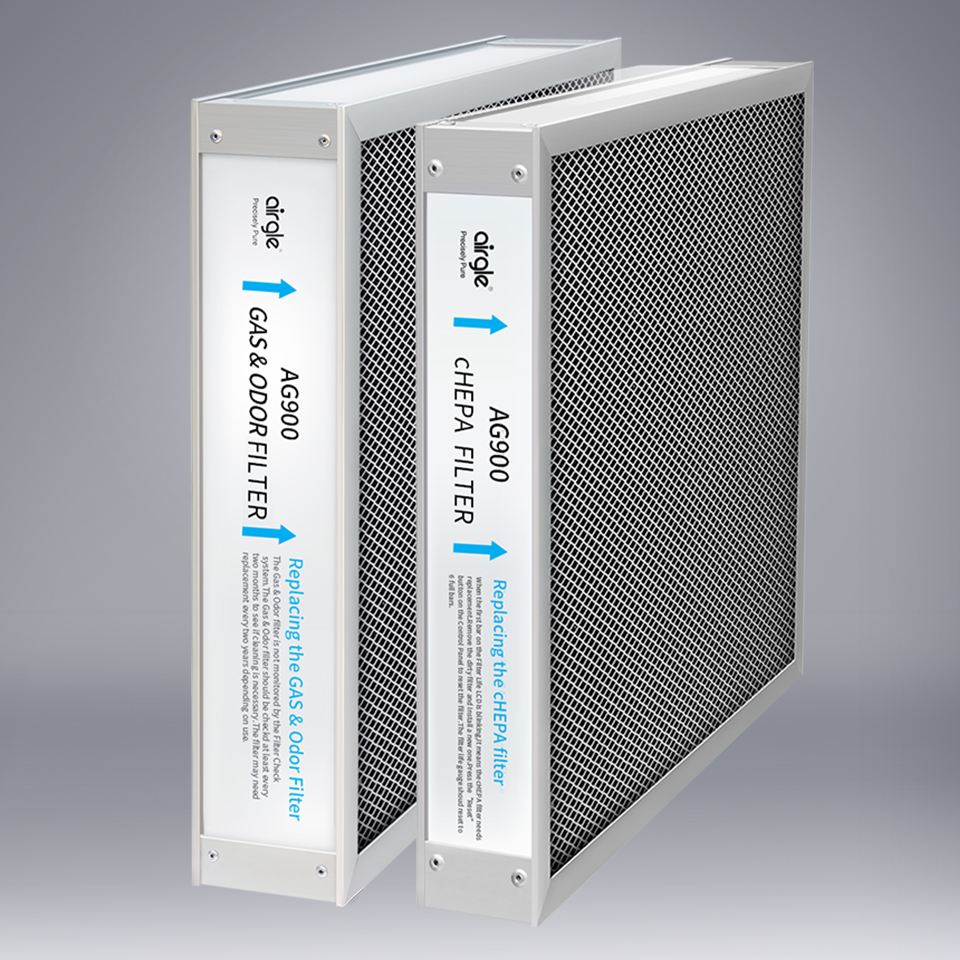
Staff Training and Safety Protocols
Chemical Safety Education
Understanding Material Safety Data Sheets (MSDS)
- How to read and interpret chemical hazard information
- Proper storage and handling procedures for each product type
- Emergency procedures for chemical spills or overexposure
- Personal protective equipment requirements and usage
Recognition of Exposure Symptoms
- Early warning signs of chemical sensitivity
- When to seek medical attention
- How to document exposure incidents
- Resources for occupational health concerns
Best Practices for Daily Operations
Workflow Optimization
- Scheduling multiple chemical services to minimize exposure time
- Proper timing of ventilation system operation
- Client positioning to minimize chemical exposure
- Product usage techniques that reduce airborne chemicals
Communication with Clients
- Explaining air quality measures to health-conscious clients
- Managing client expectations about chemical odors
- Educating clients about at-home chemical exposures
- Marketing health and safety as business differentiators
Empower your staff with our Environmental Safety Guide designed specifically for beauty and other industry professionals.
Creating a Healthier Future for Beauty Professionals
Industry Trends and Innovations
Green Chemistry Movement
- Development of less toxic beauty products
- Increased consumer demand for safer alternatives
- Regulatory pressure for ingredient transparency
- Professional associations promoting safer practices
Technology Advances
- Smart air quality monitoring systems
- More effective air purification technologies
- Integration with salon management software
- Predictive maintenance and optimization
Building a Competitive Advantage
Marketing Health and Safety
- Positioning as a health-conscious business
- Attracting environmentally aware clients
- Differentiating from competitors who ignore air quality
- Building loyalty through demonstrated care for client welfare
Professional Recognition
- Industry certifications for air quality management
- Insurance benefits for documented safety measures
- Regulatory compliance advantages
- Professional reputation enhancement
Take Action: Your Health and Business Depend on It
The beauty industry’s chemical exposure problem won’t solve itself. Every day of inaction means continued exposure to dangerous chemicals that can cause irreversible health damage to workers and clients. The good news is that effective solutions exist, and the technology has never been more accessible or affordable.
Professional air purification systems designed specifically for beauty salons can eliminate 99.97% of chemical vapors and particles, creating a dramatically safer environment for everyone in your salon. The investment pays for itself through reduced health costs, improved worker satisfaction, and enhanced client comfort.
Don’t wait for health problems to force your hand. Proactive salon owners who address air quality now will be the leaders in an industry that’s rapidly evolving toward safer practices.
Transform your salon into a healthy, profitable business environment. Contact Airgle’s beauty industry air quality specialists today for a comprehensive assessment and customized solution.
Access our complete library of Air Quality Solutions and stay ahead of regulatory changes and industry best practices.